>>>Jump to Comments<<< (Text Wall Alert!)
About the Aircraft: by Wikipedia
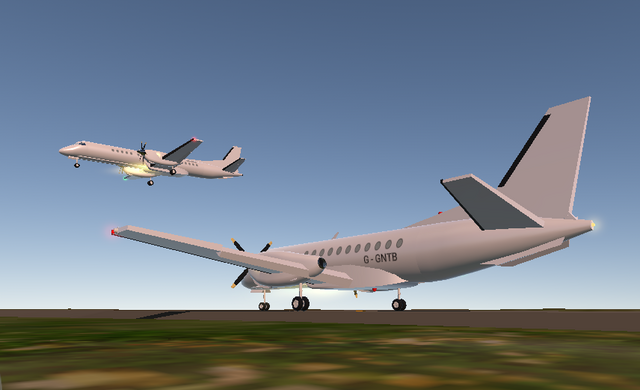
The Saab 340 is a Swedish twin-engine turboprop aircraft designed and initially produced by Saab AB and Fairchild Aircraft. It is designed to seat 30-36 passengers and, as of July 2018, there were 240 operational aircraft used by 34 different operators.
Under the production arrangement in which production was split 65:35 between Saab and Fairchild, Saab constructed the all-aluminum fuselage and vertical stabilizer along with final assembly of the aircraft in Linköping, Sweden, while Fairchild was responsible for the wings, empennage, and wing-mounted nacelles for the two turboprop engines. After Fairchild ceased this work in 1985, production of these components was transferred to Sweden.
On 25 January 1983, the Saab 340 conducted its maiden flight. During the early 1990s, an enlarged derivative of the airliner, designated as the Saab 2000, was introduced. However, sales of the type declined due to intense competition within the regional aircraft market. Saab decided to cease production of the aircraft.
Origins
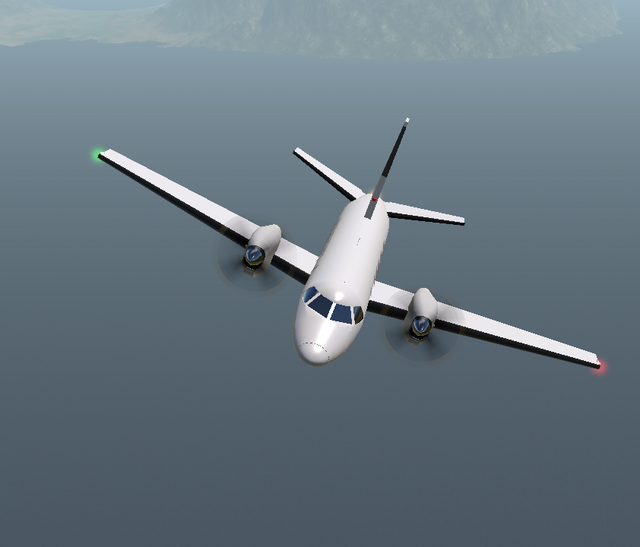
During the 1970s, Swedish aircraft manufacturer Saab AB became increasingly interested in the civil aircraft market. In 1974, the company decided to proceed with developing its first major civilian aircraft, having previously focused almost entirely upon military aircraft. During the late 1970s, internal studies had determined that a short-haul airliner should be optimized to seat around 30 passengers. Likewise, it was decided to make use of turboprop propulsion, which was slower but more economical than turbofan engines, and to optimize the airliner to take advantage of this type of powerplant; this decision may have been influenced by high oil prices during that decade, such as the 1973 oil crisis. According to author Gunnar Eliasson, the selection of a turboprop engine made the type less attractive to airlines than jet-powered competitors, however recognized that the General Electric CT7-5A2 engine picked was quite competitive with the jet engines of that era. As conceived, the airliner was to match the performance of jets within its short-haul role.
Towards the end of the 1970s, the regional airliner venture had become the largest industrial venture in Sweden and was recognized as being too large for Saab to conduct alone. Accordingly, in January 1980, it was announced that Saab had entered into a partnership arrangement with US manufacturer Fairchild Aircraft to develop and produce the upcoming regional airliner. Under this partnership, Fairchild became responsible for the manufacture of sections such as the wings, tail unit, and engine nacelles while Saab was responsible for 75 per cent of the costs of development, system integration and certification. To match the new partnership, the type received the designation of SF340. The decision to develop a new generation regional airliner had fortuitously coincided with the removal of control by the US federal government under the 1978 Airline Deregulation Act, an event which would notably contribute to sales of the type during the following decade.
The 340 shared several manufacturing and design techniques that were used in Saab's military aircraft, such as the then in-development Saab JAS 39 Gripen multirole combat aircraft. One such technique was eliminating the use of rivets on the aluminum structures, using diffusion bonding instead, to reduce weight. On 25 January 1983, the first SF340 performed its maiden flight. Shortly following its launch onto the market in 1984, the Saab 340 became the best selling commuter aircraft in the world. By 1987, all activity by Fairchild on the programe had ceased, the US company having chosen to curtail its aircraft activities, thus Saab became solely responsible for producing the 340.
Further development
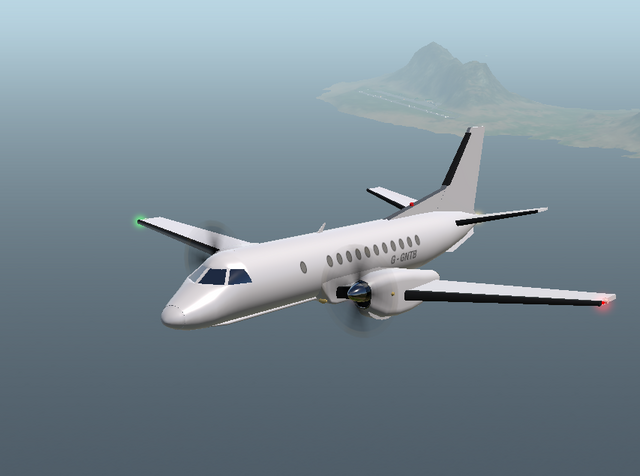
In 1985, due to Fairchild's decision to exit the aircraft manufacturing business following the completion of the first 40 units, Saab dropped the Fairchild name from the project and proceeded to continue aircraft production, referring to the type under the designation Saab 340A. A total of 159 A models were manufactured. In 1989, an improved version of the airliner, the second generation 340B, introduced more powerful engines and wider horizontal stabilizers; later production 340Bs also featured an active noise control system. A total of 200 aircraft were built. In 1994, the final third generation version, the 340B Plus, was delivered for service and incorporated improvements that were being introduced at the same time upon the larger Saab 2000, itself a derivative of the 340. A total of 100 aircraft were completed, adding up to a total of 300 B models. The Saab 340 typically seated between 30 and 36 passengers, with 34 seats being the most common configuration. The last two 340s built were constructed as older configuration 36-seat aircraft for Japan Air Commuter.
One of the major improvements introduced in the 340B Plus was the installation of an active noise and vibration control system in the cabin, reducing noise and vibration levels by about ten dB during cruising flight. This optional feature carried over from the 340B was standard in the 340B Plus along with extended wingtips which was an option on the 340B, about 30 aircraft having the WT option. Another change from earlier models was a more modern interior design and the moving of the lavatory compartment from the aft of the passenger cabin to just aft of the flight deck in most 3rd generation units. This increased total available cargo volume as the original location intruded into the cargo bin area. While the active noise control became standard on all Saab 340Bs in 1994, the first-ever 340B Plus (third B+ built) was delivered new to Hazelton Airlines in Australia in 1995, later operating for Regional Express, and currently for the Japanese Coast Guard. The system could also be retrofitted onto existing airliners.
During 1997, Saab was releasing pessimistic press releases on the 340 programe, stating that it was considering the potential closure of production line, but also pledged that it would maintain full support to existing customers if this happened. On 24 December 1997, Saab announced that it had decided to terminate production of the 340, which it claimed had lost SKr3 billion ($386.4 million) in the previous three years. By late 1998, as production was being slowed down towards an eventual shut down, Saab stated that it had been holding talks with a number of interested parties, reportedly including Indian and Chinese companies, on the potential sale of the 340 production line to another manufacturer. On 8 June 1999, the final 340 was delivered, by which time nearly 460 aircraft had been delivered. Production of all models of the 340 was terminated in 1999, and Saab ultimately decided to cease all civil aircraft production in 2005.
According to Eliasson, the decision to power the type using turboprop engines rather that jet engines had been provided as one of the reasons for Saab deciding to close down the project; another major factor had been the increasingly competitive and politicized regional airliner market in which various competing airlines were alleged to have substantially benefited from government subsidies, while the Swedish government were unwilling to make such commitments to Saab's civil projects. According to authors Sören Eriksson and Harm-Jan Steenhuis, while the 340 had been faster than jet-powered competitors such as the Fokker 100 and British Aerospace 146, it had no clear advantage in terms of payload or range; as the regional airliner market became increasingly crowded, newer types such as the Bombardier CRJ200 and Embraer ERJ 145 family, which did have an advantage over the 340, had led to diminished sales.
Derivatives
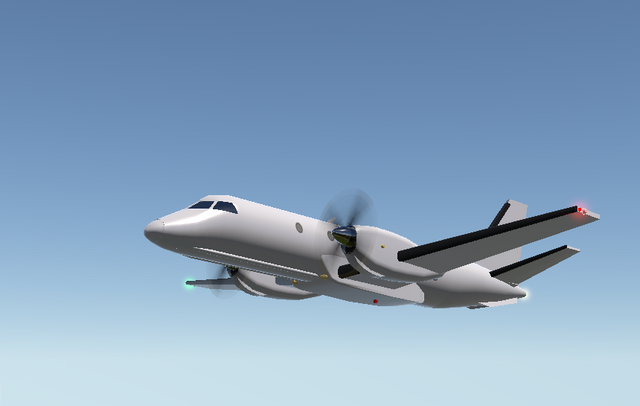
During the early 1980s, Sweden's Defence Materiel Administration (FMV) requested that Ericsson, a Swedish electronics company, develop a suitable radar for an airborne early warning (AEW) system.[15] The corresponding system was soon paired with the 340 as a platform. Several military variants of the type were produced, including the Saab 340 AEW&C, 340AEW-200 & 340AEW-300, which are AEW and airborne early warning & control (AEW&C) aircraft.
During the 2010s, Saab promoted the 340 in the maritime patrol mission. A specialized variant of the aircraft, designated as the 340 MSA, was mooted; the proposed patrol aircraft is to be equipped with various sensors and combat systems to be capable of performing both anti-surface and anti-submarine warfare, as well as signals intelligence and long range search and rescue operations. In June 2014, Anders Dahl, head of Saab Singapore, gave a presentation on the 340MSA, and observed that several nations were in talks with Saab on the type, as well as there being increasing demand for such maritime patrol aircraft in Southeast Asia.
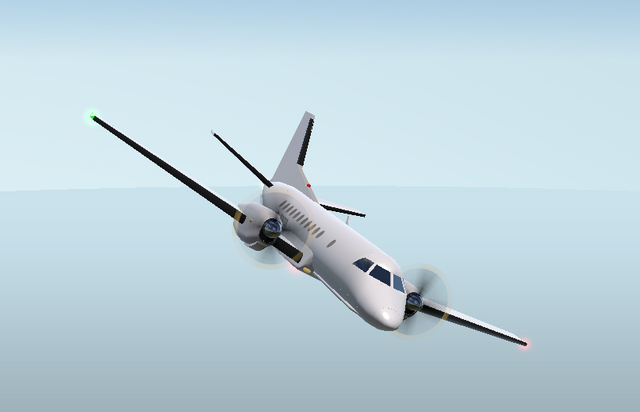
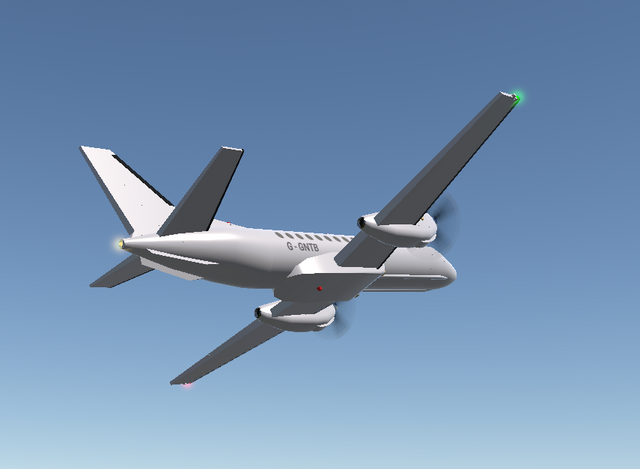
Actual Sample:

Image Credit: Wikipedia
References:
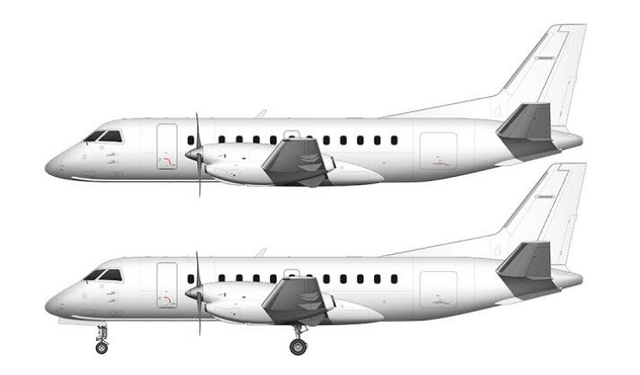
Image Credit: Norebbo
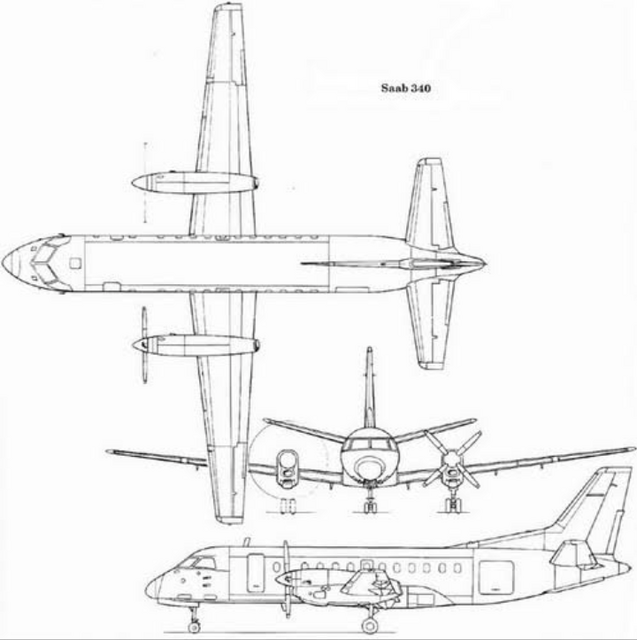
Image Credit: IPMS Nederland
This aircraft follows all the basic AI requirements. It is specially designed for Artificial Intelligence [AI] to simulate air traffic, it is able to land and take off with extreme precision at the main airports in the game, it is also a playable aircraft, you can enjoy air collisions, target shooting or just enjoy of a more realistic air traffic.
How to make it operational:
Step 1: Download and save this aircraft to your collection
Step 2: Activate in-game AI air traffic in sandbox mode and wait patiently on the ground until the aircraft is spawned
If the aircraft is not spawning, remove decorative details such as lights, letters and numbers on the fuselage, then repeat the process again until the aircraft is spawned in your skies.
Soon the Saab 2000 will be ready for the public! :D
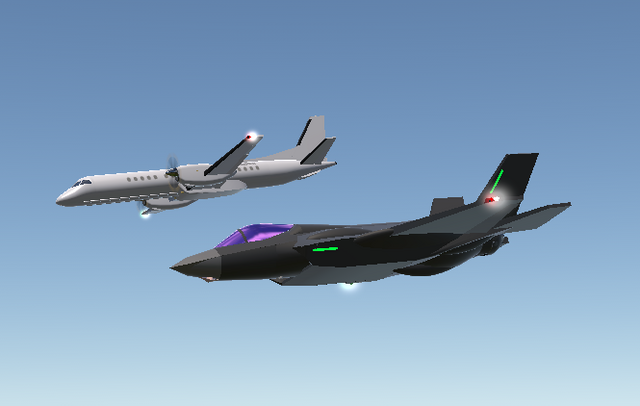
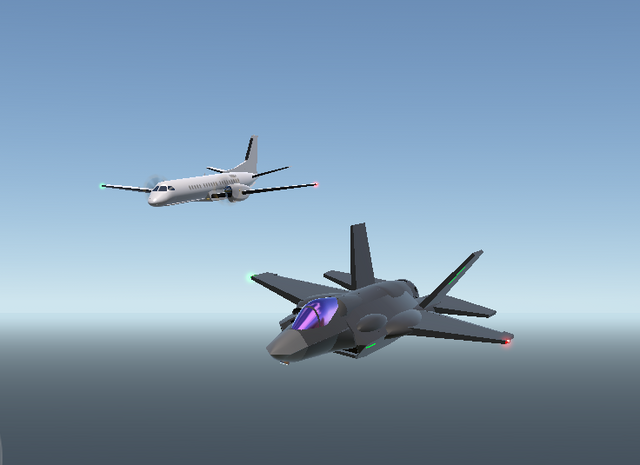
Controls: Standard
Thank you for your attention, Good flight!

Released for Painting
Specifications
General Characteristics
- Successors 23 airplane(s) +653 bonus
- Created On Android
- Wingspan 108.6ft (33.1m)
- Length 100.4ft (30.6m)
- Height 35.5ft (10.8m)
- Empty Weight N/A
- Loaded Weight 30,339lbs (13,761kg)
Performance
- Horse Power/Weight Ratio 0.131
- Wing Loading 25.5lbs/ft2 (124.3kg/m2)
- Wing Area 1,191.6ft2 (110.7m2)
- Drag Points 5469
Parts
- Number of Parts 93
- Control Surfaces 7
- Performance Cost 499

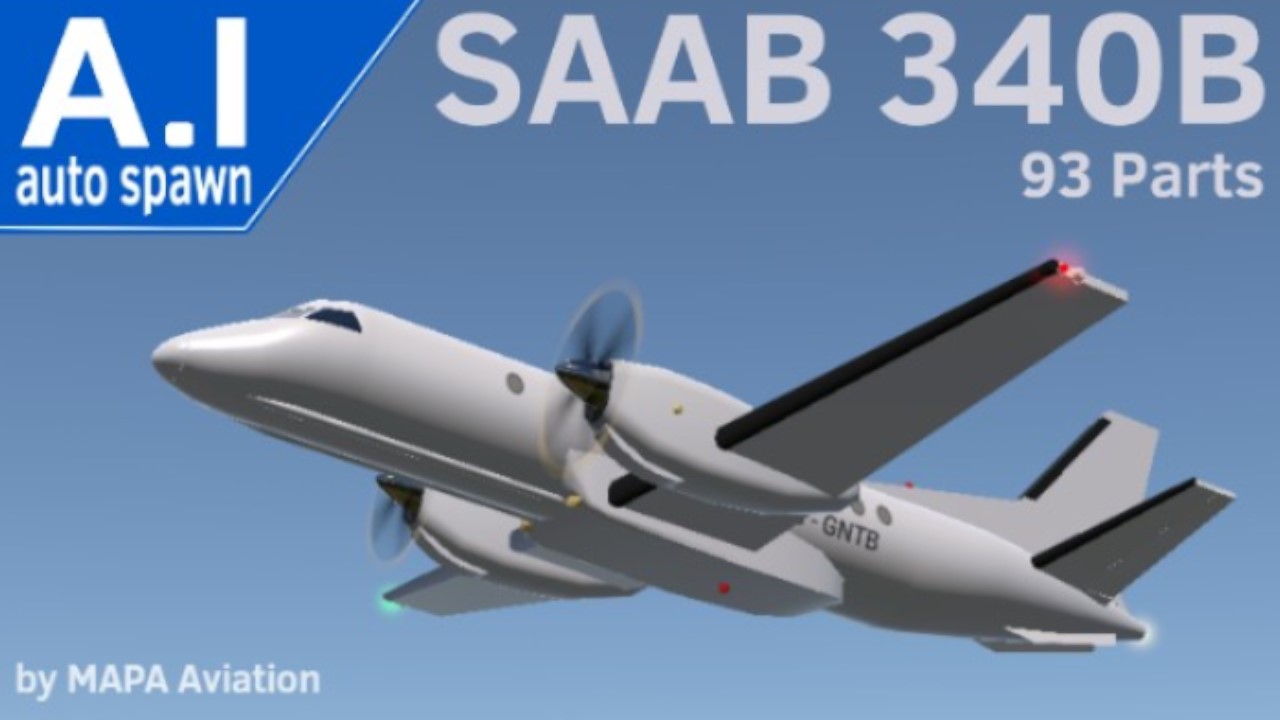



<<<Jump to the top>>>
@dabestsock ok finished
@dabestsock not yet since I had to find another radar I could use as a subassembly (and I've also been busy with stuff irl,)but it should be done by tomorrow
@Cessna921alt did you make it
@dabestsock I might be able to take the radar from MAPA's E2 and put it on this Saab 340B.
Can someone make one like this : https://www.flightglobal.com/analysis/analysis-how-skibox-unit-defends-swedish-skies/124053.article
oh s*it i accdidently removed my upvote
@JacksEpicGamingYT I learned through this video
@MAPA Thanks
@MAPA this is what i was talking about. a more airlineriey (if that's even a word, lol) plane. great work MAPA!
@MobileBuilder21 Thanks!
Excellent work
MAPA thanks for upcoming my plane
@TupolevTU144Charger haha so Yae is having an affair????
@MAPA thanks for upvoting my aircraft
i also make a mid air Collison first up the 2019 Panama mid air Collison in june 1 2019 keyon air express flight 4568 N154KA a emb 120 (airline by Simon_Dev on roblox) was on a normal flight from Los Garzones-Monteria International Airport, to Albrook "Marcos A. Gelabert" International Airport Meanwhile MAPA Aviation flight 236 a Saab 340 M-GAGO Was on is flight from José María Córdova International Airport to Marcos A. Gelabert International Airport as well the two planes take off at 3000.ft they enter Panama air space the atc tells the planes they are to close but far of a man sees the planes close to the sky
ATC: Keyon 4568 sube o baja, por favor hay otro avión a tu lado
Co Pilot: Ok, subiré a 2000 pies, Roger.
Pilot of the Mapa plane: Sí, la decidiremos a 2000.ft Una y otra vez.
Is to late the planes collide
Pilot of keyon air : Oh, mierda
Co pilot of keyon air :aiiiiiiiiiiiiaagh
Pilot of Mapa: ahhh
Co Pilot of Mapa: nooo gato ahhhhi
the Embraer EMB 120 brakes us into 1/100. parts of the two planes fall from the sky like Continental Express Flight 2574. The Saab 340 falls down what's worst. all planes Chauth fire now what's left ? are just fire balls falling from the sky untill they hit the water, all passengers and pilots onboard the two planes died. R.I.P
@JuliarrombaBR and @EriksYeuEm are the yae miko enjoyers?
coincidence
we need the Saab 2000
@MAPA oh, that's mean some of your planes will not be AI anymore. Whatever, I like the look and freedom of your style building
@L3FT2R1GHT I scaled them to the standards of the houses and buildings present in the game's main airports. And also to be more visible in the skies when piloted by A.I.
@MAPA How come your recent aircraft are larger than real life?
@WinsWings Thank you very much, unfortunately the parts limit has now reduced to 93, this is only for medium aircraft
FINNALY. IT HAS BEEN MADE AFTER A YEAR
@MAPA ooohhhh
So beautiful at least for me, even without any livery colors